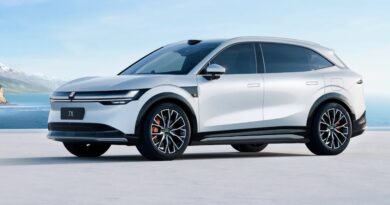Revolutionary! Mercedes-Benz solar paint could mean Australians never have to plug their EVs in again
Mercedes-Benz has developed groundbreaking new solar paint that could provide all the energy Australians will ever need for their daily motoring.
And the tech could be introduced within five-to-10 years.
Revealing the tech recently in Germany, researchers admit how stunned they were with how quickly the solar paint – dubbed photovoltaic surfaces – is evolving.
READ MORE: 300km charge in 10 minutes: Tesla Model 3-rivalling Mercedes-Benz CLA reveals its pioneering EV tech
READ MORE: About turn: Mercedes-Benz changes its mind and confirms plug-in hybrid C-Class for Australia to challenge the BMW 330e as demand for PHEVs grow
READ MORE: 2024 Mercedes-Benz EQB 250+ review: The LCT-busting prestige seven-seater to battle Kia’s EV9
First experimented with on the 2022 Vision EQXX concept (pictured top), the German brand’s scientists initially thought the tech had limited scope for mass production until experiments were carried out with prototypes coated with the paint in real-world scenarios.

Instead of just coating the roof and bonnet to form a 1.8-square-metre surface area, one scientist suggested covering an entire car with the new solar paint, ramping up the surface area to more than 11m2.
Another difference to the EQXX concept is instead of wiring the body panels to the 12-volt system, scientists hardwired the body panels to the Benz’s high-voltage battery and the performance of the paint was well beyond expectations.
Even in Stuttgart the solar paint provided enough energy, on average over the 12-month period, to cover an average of 32km daily, with the test cars’ paint producing far more electric energy in summer months.
That number equates to 60 per cent of the average German’s daily commute on free energy.

Mercedes-Benz innovations and future technologies. Solar coating on the body generates electrical energy to extend the range of electric vehicles.
A second trial was carried out in LA where up to 47km of range was produced by the solar paint.
One engineer involved in the experimental trial told EV Central that early simulations replicating Australian sunlight suggests the paint should provide more than 55km of range in a single day.

Mercedes-Benz innovations and future technologies. Up to 20,000 kilometres of additional electric range per year thanks to solar coating.
That figure means most Australians would never need to manually recharge their car for their daily commute, with the paint providing more than 20,000km ‘free’ range over the average 12-months.
Combined with Mercedes’ bi-directional charging, the new paint could even end up powering appliances and even homes power outages in the future.
Available in all colours, engineers admit the solar paint work best in darker shades.

When it’s launched, the tech should be as durable as regular paint. The photovoltaic surface is protected by at least two protective lacquer finishes to ensure it isn’t damaged in daily use.
Manufactured without using any rare earth metals or silicon, the new solar paint is non-toxic and said to be made of readily available materials that are easy to recycle and considerably cheaper than existing solar cells.
There’s is one huge drawback with the tech which is there’s currently no vehicle architecture (including the all-new MMA platform primed for the next-generation CLA) that can incorporate the new solar paint.
That oversight is because even Mercedes-Benz never imagined its solar paint to be so efficient or so capable of transforming the sun’s rays into free energy.





I’ll paint the roof of the house.
Absolute bullshit lol. There isn’t even enough space on a car to generate 10% of a average ev battery bank let alone 60%.
Sounds great, but I don’t understand “There’s is one huge drawback with the tech which is there’s currently no vehicle architecture (including the all-new MMA platform primed for the next-generation CLA) that can incorporate the new solar paint.”
What does this mean? “vehicle architecture” ??? and what is MMA platform?
The other question might be related – Why will it take 5-10 years to implement this special paint?
I believe they just mean they haven’t designed a car to use this tech yet. So it should just be a matter of making it a priority on one or more models and incorporating it into their designs, and it will take off from there. So not really a “drawback with the tech” as much as the just haven’t done it yet.
This is such a phony article , well how can you get enough recharge when there’s weeks of rainy day , seasons, clouds, nightime during winter/ summer, acceleration and speed , wind drag and all of these variables will all contribute to recharge efficiency.